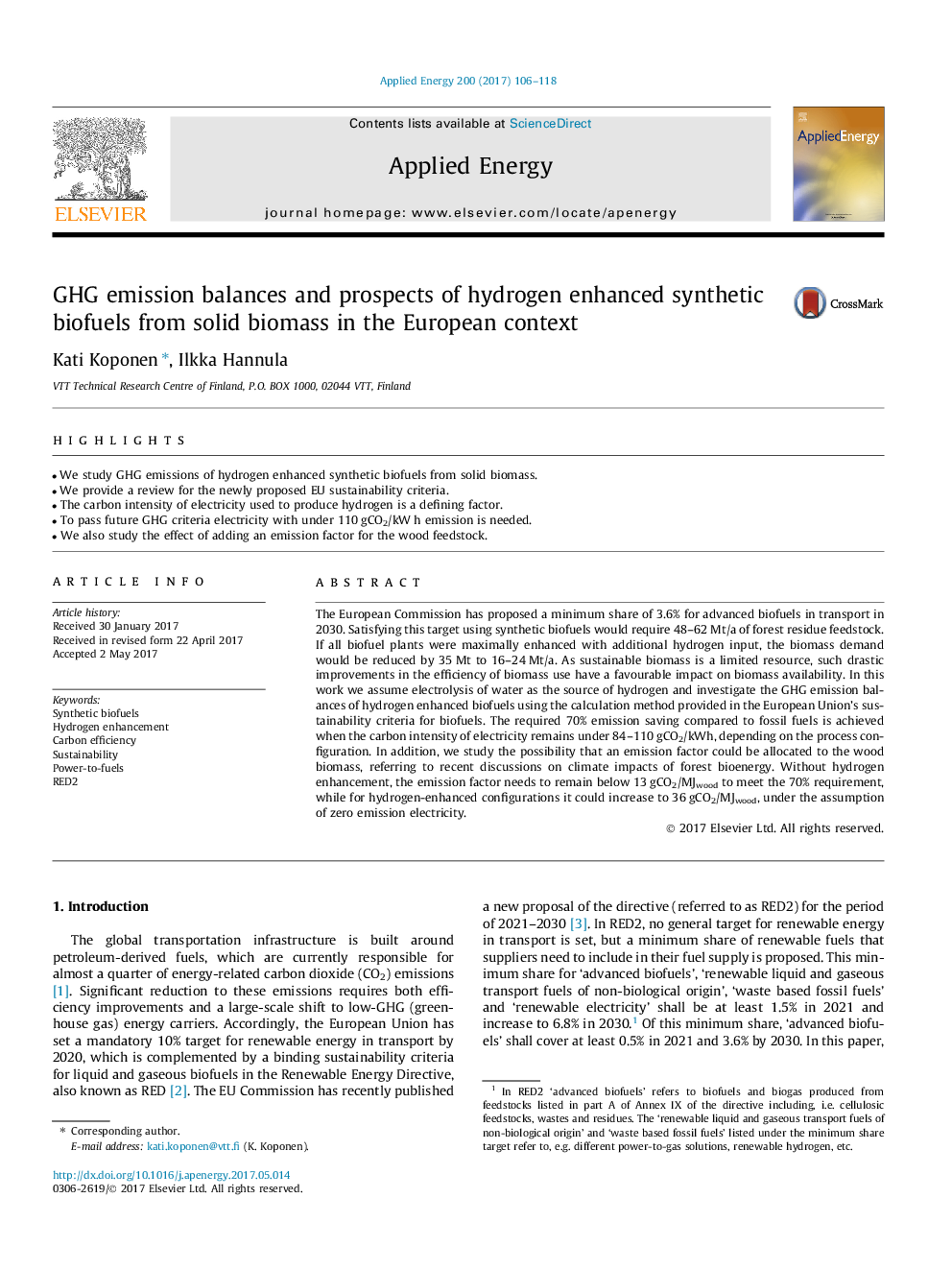| Article ID | Journal | Published Year | Pages | File Type |
|---|---|---|---|---|
| 4916146 | Applied Energy | 2017 | 13 Pages |
Abstract
The European Commission has proposed a minimum share of 3.6% for advanced biofuels in transport in 2030. Satisfying this target using synthetic biofuels would require 48-62Â Mt/a of forest residue feedstock. If all biofuel plants were maximally enhanced with additional hydrogen input, the biomass demand would be reduced by 35Â Mt to 16-24Â Mt/a. As sustainable biomass is a limited resource, such drastic improvements in the efficiency of biomass use have a favourable impact on biomass availability. In this work we assume electrolysis of water as the source of hydrogen and investigate the GHG emission balances of hydrogen enhanced biofuels using the calculation method provided in the European Union's sustainability criteria for biofuels. The required 70% emission saving compared to fossil fuels is achieved when the carbon intensity of electricity remains under 84-110Â gCO2/kWh, depending on the process configuration. In addition, we study the possibility that an emission factor could be allocated to the wood biomass, referring to recent discussions on climate impacts of forest bioenergy. Without hydrogen enhancement, the emission factor needs to remain below 13Â gCO2/MJwood to meet the 70% requirement, while for hydrogen-enhanced configurations it could increase to 36Â gCO2/MJwood, under the assumption of zero emission electricity.
Keywords
Related Topics
Physical Sciences and Engineering
Energy
Energy Engineering and Power Technology
Authors
Kati Koponen, Ilkka Hannula,
